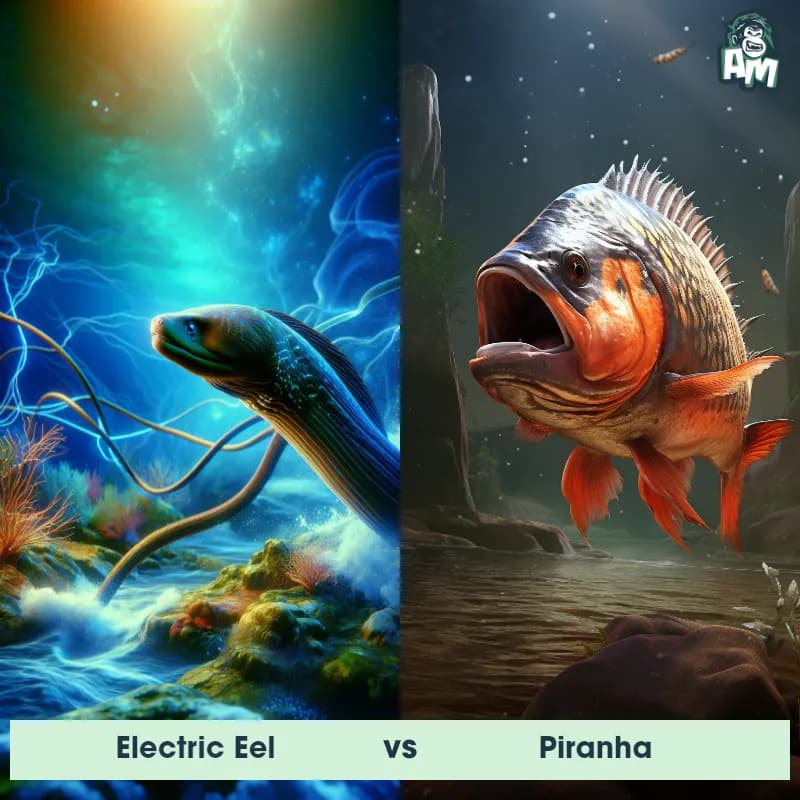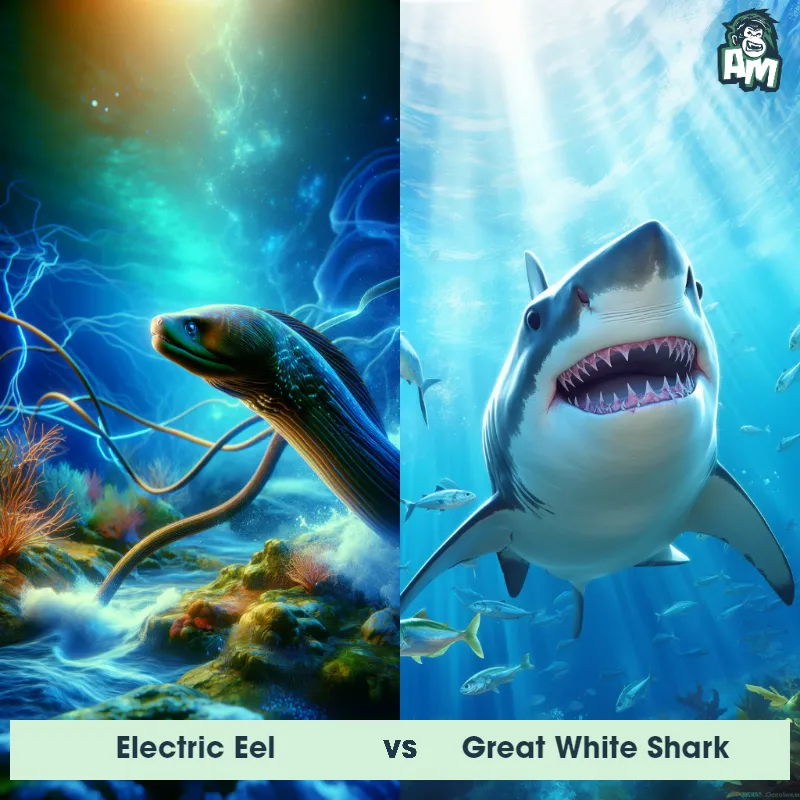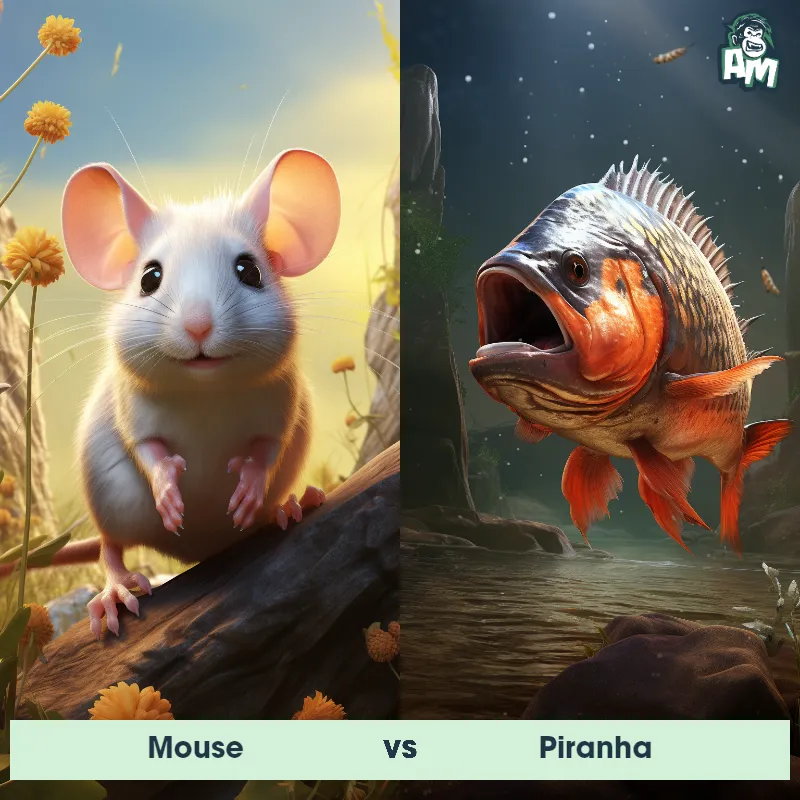Electric Eel vs PiranhaSee Who Wins

Good evening, ladies and gentlemen! Welcome to this thrilling matchup between two fierce contenders in the aquatic world. We have an electrifying Electric Eel going head-to-head against a razor-sharp Piranha. The excitement is palpable as these amazing creatures prepare to showcase their formidable skills. Get ready for a heart-pounding battle of strength, strategy, and survival!
Contender 1: Electric Eel
The Electric Eel, also known as the Electrophorus electricus, is a freshwater fish found in the Amazon and Orinoco River basins in South America. Despite its name, it is not an eel but rather a type of knifefish. It can grow up to 8 feet long and weigh up to 44 pounds. The Electric Eel has a unique ability to generate electric shocks of up to 600 volts, which it uses for hunting and self-defense.
Fun Fact: The Electric Eel's electric shocks are so powerful that they can stun or kill prey, as well as deter predators such as caimans and humans.
Contender 2: Piranha
The Piranha is a freshwater fish that resides in South American rivers and lakes. They are known for their sharp, triangular teeth and strong jaws, which are both adaptations for their diet of fish, insects, and sometimes larger prey. Piranhas have a robust body shape, often with a reddish-brown or silver coloration, and can range in size from 5 to 20 inches depending on the species. Despite their fearsome reputation, they are often scavengers as much as they are predators.
Fun Fact: Contrary to popular belief, piranhas are not exclusively carnivorous and can be omnivorous, feeding on seeds and fruits as well as meat.
Matchup Stats
| Electric Eel | Piranha | |
|---|---|---|
| Size | Up to 8 feet (2.4 meters) | 5 to 20 inches (12.7 to 50.8 cm) |
| Weight | Up to 44 pounds (20 kilograms) | Up to 7.7 lbs (3.5 kg) |
| Speed | Speed: 0.6 mph (0.97 km/hr) | 55mph (88.5km/h) |
| Key Strength | Electric shocks of up to 600 volts | Sharp, triangular teeth and strong jaws |
| Biggest Weakness | Vulnerable to physical attacks | Often scavengers, not aggressive predators |
Current Votes
Electric Eel vs Piranha
See Who Wins
View More Matches
Looking For More?
Similar Matches
Scientific Stats
| Electric Eel | Piranha | |
|---|---|---|
| Scientific Name | Electrophorus electricus | Pygocentrus nattereri |
| Family | Electrophoridae | Characidae |
| Habitat | Freshwater | Freshwater rivers and lakes |
| Geography | Amazon and Orinoco River basins in South America | South America |
| Diet | Fish, amphibians, and small mammals | Fish, insects, seeds, fruits, and sometimes larger prey |
| Lifespan | 15 years - 22 years | 5 years - 15 years |
Key Differences between Electric Eel and Piranha
- Coloration: Electric Eels showcase a dark brown or grayish coloration along their backs, while Piranhas often display shades of silver, red, or yellow, with distinct patterning.
- Fins: Electric Eels possess a caudal fin extending the length of their body, in addition to dorsal and anal fins, whereas Piranhas have smaller, more defined fins located closer to the tail region.
- Size: The Electric Eel stands out as significantly larger than Piranhas, reaching lengths of up to 8 feet, while Piranhas typically measure around 6-10 inches in length.
- Teeth: Piranhas are well-known for their sharp, triangular teeth adapted for tearing flesh, while Electric Eels have small, needle-like teeth primarily used for capturing prey rather than tearing it apart.
- Electric Organ: The Electric Eel possesses specialized electric organs along the length of its body, which is not found in Piranhas, enabling it to emit electric shocks for hunting and defense.
- Shape: The Electric Eel has an elongated, snake-like body, whereas Piranhas exhibit a more robust and compact body shape.



























